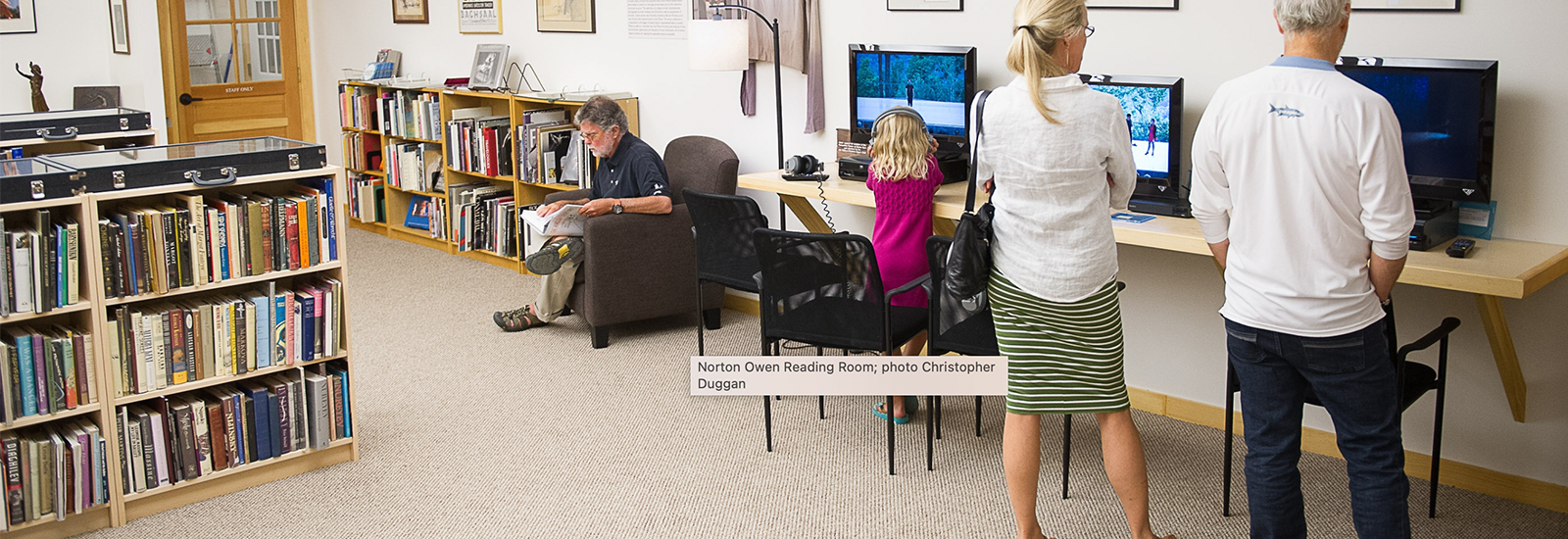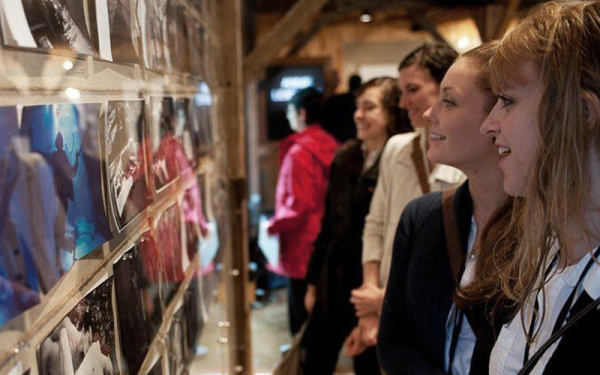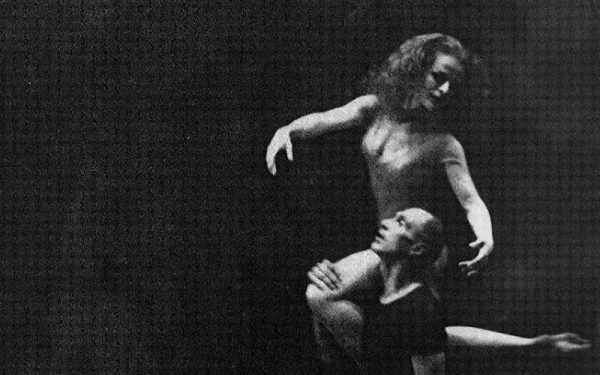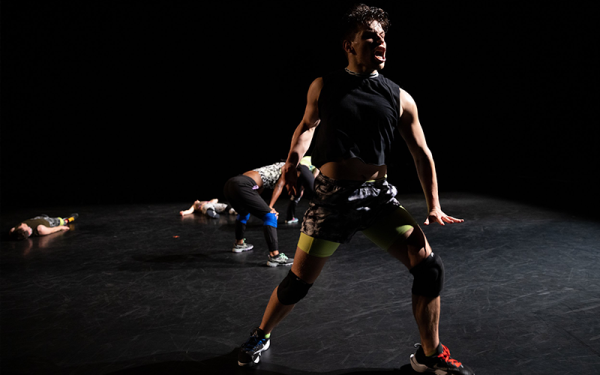
About the Author
ANGELA CIAROCHI (she/her)
Angela Ciarochi is an undergraduate fellow in the Global Arts and Humanities’ 2022-2023 Society of Fellows cohort. Ciarochi is pursuing dual degrees in dance and strategic communication. Her research focuses on the intersections between dance, community, identity, culture and storytelling, and she aims to explore how the dancing body serves as a repository, or an archive, of lived experiences. She strives to use her platform to amplify voices that are historically underrepresented and dismantle colonial, racist and patriarchal structures in practice.
“Through the act of performance, with our own bodies, we are allowed to experience and connect the historical past with the present–to the new, to the moment. By inhabiting the moment, we live the experience; we stand in the shoes of others and come to know firsthand what is often imagined, lost, forgotten.”
Carrie Mae Weems
Project Overview
My research explores aesthetics of masculinity in contemporary dance through qualitative, archival and embodied research on contemporary choreographers Ted Shawn, José Limón and Abby Zbikowski over the last century. My study approaches the thematic of Archival Imaginations by using existing dance archives for historical insights, working with contemporary dancers as resources and repositories of knowledge themselves, and considering my bodily archive and the kinesthetic (body-based) knowledge my embodied practice brings to reconceptualizations of archival practices informed by dance methodologies.
Introduction
My project investigates diverse understandings of masculinity and how aesthetics that come to define masculinity are mapped onto dancers' bodies and interpreted by dancers between the 1930s and 2020s. I take the work of Ted Shawn as a point of departure, then the works of José Limón and Abby Zbikowski to identify gendered performance onstage over the past century.
In the discussion of masculinity in contemporary dance, Ted Shawn looms large in dance history with his all-male dance company. In the 1930s, Ted Shawn founded his world-renowned, all-male dance company, Ted Shawn’s Men Dancers, which utilized aesthetics of masculinity and manliness to reject the current gender stereotypes placed on men in dance at that time. Shawn also used these aesthetics to heighten the physical strength of the dancers, often by appropriating ideas of masculinity from non-Western cultures. Plenty of literature argues that the stoicism within Shawn’s choreography for his all-male dance company helped legitimize the role of men in contemporary dance, establishing male dancers as strong, hardworking men that rightfully belong in the professional dance realm. However, to understand how masculinity has been interpreted by dancers’ bodies in contemporary dance over the past century, my research required a more holistic perspective beyond Ted Shawn’s white male embodiment, which added José Limón and Abby Zbikowski to the discussion.
Limón was a Mexican-American choreographer from the mid-20th century whose choreography often reflected his “macho” body type and bravado, using similar motions and archetypes reminiscent of Shawn. Yet, unlike Shawn, Limón straddled racialized perceptions of his own work related to Latinidad, immigration, and indigeneity. Limón founded the Limón Dance Company in 1946, and the company is still active today and based in New York City.
On the other hand, Zbikowski is a present-day female choreographer who instills force and strength that is unbound by gendered conventions in her movement generation. Zbikowski’s hyperphysical, non-gender-specific dance movements reflect the intense physicality that is required of professional athletes or stereotypically holds merit in masculine movement forms. Abby Zbikowski is a current professor in the Department of Dance at Ohio State and is the Artistic Director of Abby Z and the New Utility.
In addition to evaluating academic sources, I engaged two approaches to archival research:
- I utilized traditional archives such as film, images, reviews, photographs, choreographic notes and Labanotation scores from:
- New York Public Library for the Performing Arts (New York, NY)
- Jacob’s Pillow Archives in Massachusetts (Becket, MA)
- OSU Libraries Special Collections (Columbus, OH)
- I reflected on my bodily archive (how my past movement experiences are stored in my body) and conducted embodied research by:
- Learning Shawn’s I Am Climbing Jacob’s Ladder from Labanotation score: a dance notation system that uses symbols to represent movement
- Learning an excerpt from Zbikowski’s Radioactive Practice (2022) through a one-on-one coaching experience with founding company member Fiona Lundie
- Attending the José Limón Dance Foundation Winter Intensive in New York City
- By learning Shawn’s choreography from Labanotation, embodying Limón’s technique at the workshop, learning Zbikowski's choreography, and conducting extensive archival and qualitative research, I show how the choreographers generated understandings of masculinity within the cultural values of their time. By embodying these various masculine movement aesthetics from different historical eras, I cross-analyze how masculinity shows up differently depending on the gender of the dancer and choreographer, and when the dance was created and performed.
- Through this research, I discovered that masculinity is not bound by binary gender structures, but rather it pertains to a set of qualities that can be interpreted and constructed on all-gendered dancing bodies. My research redefines masculinity as a varied combination of the following qualities: presence, stoicism, confidence, full-body movement, manual labor, athletics, focus on pelvis, weight, and humanness. When these qualities show up on different dancing bodies, they help promote different meanings and understandings of masculinity within the vast field of contemporary dance.
- My research is significant not only in terms of the insights it contributes to a discussion on masculinity and masculine aesthetics in dance choreography and performance, but also in demonstrating the fullness of what archives can be and the power of embodied archives as resources for research.
- By using my prior kinesthetic knowledge coupled with my new kinesthetic experiences, I discovered ways that I can step into someone’s movement forms and learn more about history through their movement. My somatic experiences of the movement qualities alongside other archival sources provided a more encompassing perspective on the choreographies I was analyzing.
- Movement is a large part of human life, and by embodying the choreographer’s corporeal experiences, I found I could apply my shared history of a practice to draw answers about the choreography and its impact on people. As a dancer myself, it is vital for me to reflect on my previous movement experiences and negotiate biases in order to unpack the present movement experiences that I was analyzing. Dance research involves humanistic methods of analysis, and I found that the most important realizations in my research occurred when I engaged with my bodily archive in addition to other archival, evidential sources.
- Albright, A.C. Choreographing Difference: The Body and Identity in Contemporary Dance. Middletown: Wesleyan University Press, 2011.
- Foulkes, J.L. Modern Bodies: Dance and American Modernism from Martha Graham to Alvin Ailey. The University of North Carolina Press, 2002.
- Limón, J. Dancing with the Devil: Society and Cultural Poetics in Mexican-American South Texas. The University of Wisconsin Press, 1994.
- Manning, S. Modern Dance Negro Dance, The University of Minnesota Press, 2001.
- Srinivasan, P. Sweating Saris: Indian Dance as Transnational Labor, Temple University Press, 2012.




